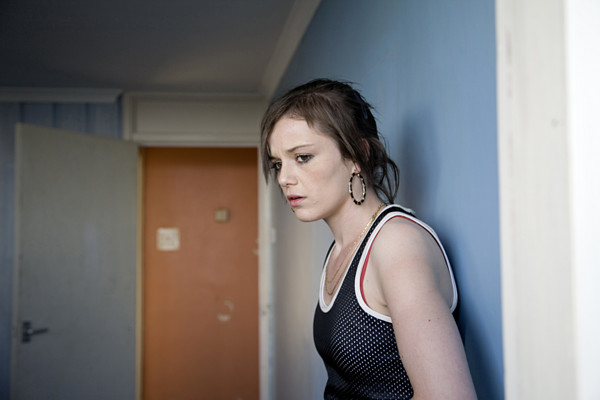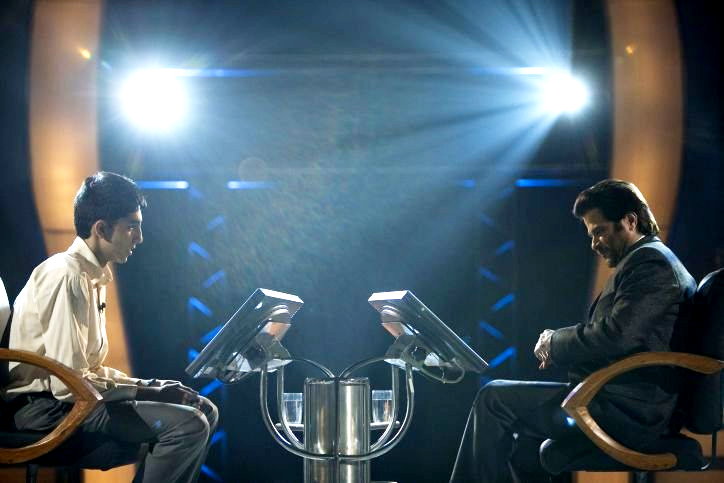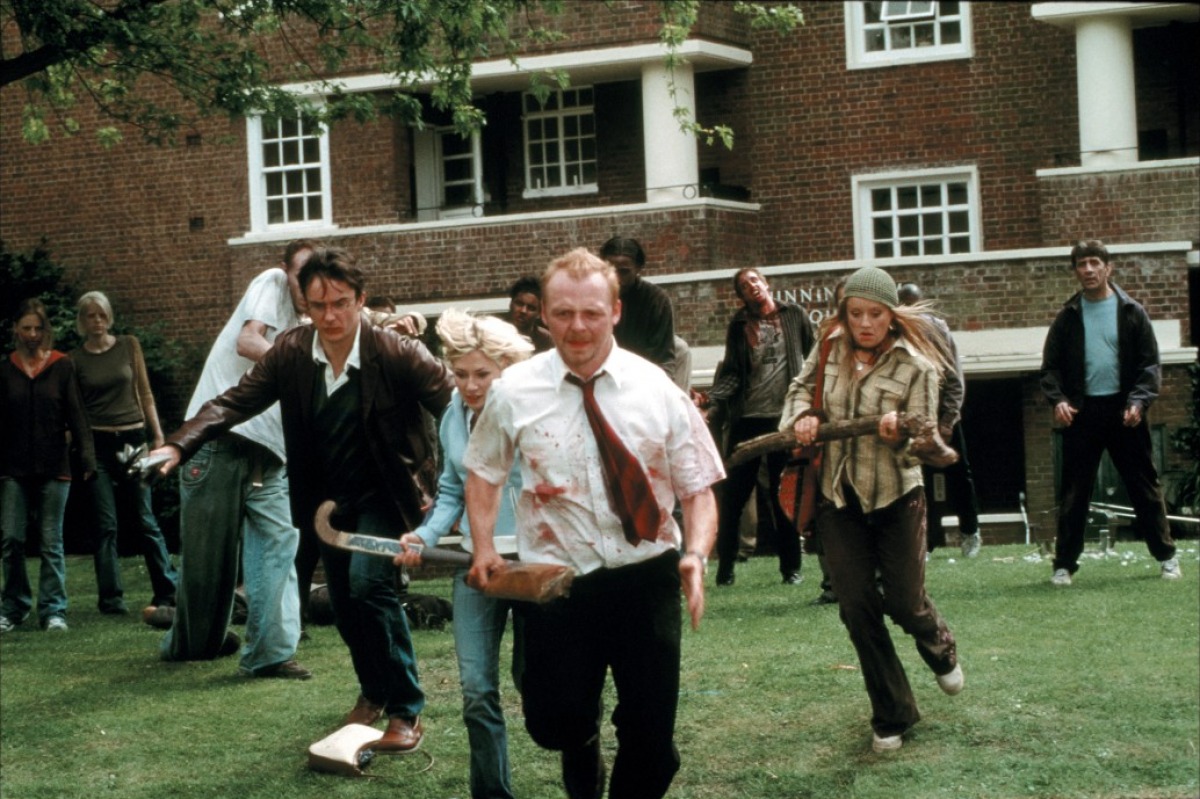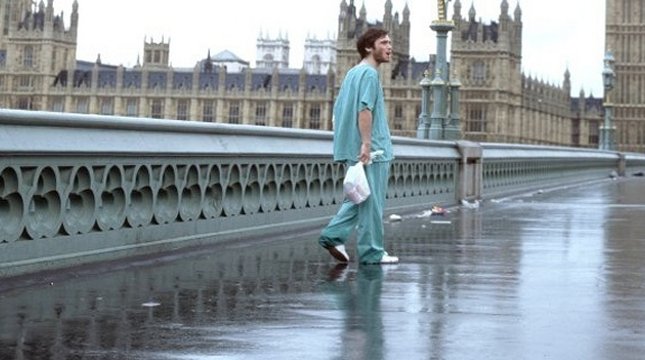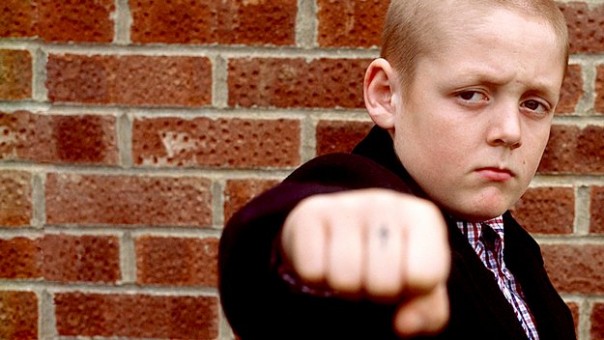7. Fish Tank (2009)
Director Andrea Arnold’s film about an isolated 15-year-old girl, Mia (played by newcomer Katie Jarvis) is a slice of social realism.
Mia lives with her mother Joanne (Kierson Wearing) in a flat on an East London Council estate. Mia is something of a loner but nobody’s fool, somewhat at odds with her peers she head-butts a classmate and makes to free a horse on a nearby traveller encampment – encountering Billy, one of three brothers who own the horse. Mia has a passion for dancing, she also develops an intrigue for her mother’s new boyfriend Connor (Michael Fassbender), who also takes an interest in her.
A contrast or polar opposite to the frequently ‘polite’ costume bound heritage stand of British film is that of social realism, here Arnold’s film depicts Mia’s life with social realism at its starkest, the element of manipulation in the scene in which she has sex with Connor maybe a step too-far for some. Interestingly Arnold (remembered by a generation as Dawn from kid’s show Number 73) followed Fish Tank with a ‘costume bound’ but starkly realist version of Bronte classic Wuthering Heights in 2011 – a fusion of these two British strands.
To date Katie Jarvis (apparently cast after having being seen arguing with her boyfriend at a train station) hasn’t followed up her performance in Fish Tank but is, at the time of writing, rumoured to have a role in the forthcoming Star Wars sequel. In some ways Mia’s isolation is comparable to that of Shaun in This is England three years previous.
6. Billy Elliot (2000)
A massive hit upon its release, Lee Hall’s screenplay directed by Stephen Daldry is set in the North East of England amid the backdrop of the mid-80’s miners strikes. The plot follows Billy (Jamie Bell) and 11 year old boy who rejects boxing classes to follow his passion and his talent for ballet dancing. In his rather masculine North East town, this brings him into conflict with both his father and older brother who are each facing their own conflicts in this turbulent time. Practising in secret with the help of dancing coach (Julie Walters), Billy must face poverty and overcome his own demons (his temper) to succeed.
A film with a narrative that is of particular interest to anyone with an awareness of Joseph Campbell’s ‘Hero’s Journey’ model of reoccurring mythical archetypes, both elements of plot and characters check well against this format – Billy’s Grandmother even serving as a ‘failed hero’, Billy’s anger as an ‘inner shadow’, likewise Billy’s friend appearing as a herald at times of change.
There is also an awareness of other ‘classic’ British films here – the backdrop is decidedly Brit ‘kitchen sink’, Billy’s name and theft of a library book a clear homage to Billy Casper and Ken Loach’s KES, in many ways Billy Elliot can be considered a retelling or perhaps echo of the same tale but with a happy ending, both have oppressive brothers, a missing parent and find escape/solace in their passion.
The Northern industrial town backdrop/stereotype has become something of a stereotypical backdrop/shorthand of U.K film and television and here Billy Elliot grasped the baton passed by the equally successful Full Monty evoking all the right emotions for a well-rounded tale. Gary Lewis gives a solid and equally rounded performance as Billy’s widowed father. The story is now an equally big hit as a stage musical.
5. Slumdog Millionaire (2008)
Having found made firm foundations as a film director with Shallow Grave 15 years previous, Danny Boyle’s direction of a script adapted from the 2005 novel Q & A by Full Monty writer Simon Beaufoy was an eagerly anticipated and well received ‘cinematic event’.
The film follows Jamil Malik (Dev Pattel – fresh from C4 TV series Skins) a former child of the Mumbai slums as he takes part in the Indian version of quiz show ‘Who Wants to be a Millionaire’ but is accused of cheating. The story then charts his life up to that moment, presenting key moments which explain how he knows the answer to each question.
Widely acclaimed even before its release, Slumdog was advertised as a rather bright ‘feel good film of the year’ which for some part (the Bollywood finale) may be true, but it is not without its darker socially topical elements, such as the children who are blinded by an organised gang to make them more ‘effective’ singing beggars. However, it is the inclusion of these darker aspects which add tone and are ultimately what makes the ending so rewarding.
4. Shaun of the Dead (2004)
Directed by Edgar Wright who also co-wrote the script with one of its stars Simon Pegg, this ‘zombie-comedy’ was an instant hit both critically and with audiences. Apathetic electronics shop employee Shaun (Pegg) is having a difficult time in his relationship with girlfriend Liz, when he forgets to book a table for their anniversary leading them to spend yet another evening in the Winchester pub she breaks up with him.
This leaves Shaun to drown his sorrows with Ed (Nick Frost) – eventually awaking the next morning to discover a zombie apocalypse has begun. Eventually, Shaun, Ed, Liz and associated friends and family are besieged by zombies whilst seeking refuge in the Winchester.
Post-modern pop culture references and tributes are a plenty from the film’s title throughout, lesser known is the extent some of this ‘fan boy’ rigour extends to – for example, the whole film is shot in the widescreen ratio of 2:35 in tribute to director John Carpenter’s favoured method. Rather deliberately ironically for such a fan boy film, it has been noted that the narrative warns of the dangers of perpetual adolescence, as Shaun would otherwise fail to address his problems and stumble on day to day had the zombies not arrived.
Although, as critic James Rose observes, the ending is open to interpretation, Shaun now living with Liz keeps Ed (now a zombie) in the garden shed where he sneaks off to play computer games – this could be considered as Shaun moving on and keeping remnants of the past locked away or simply demonstrating that the character cannot fully move on and will continue as a ‘naughty boy’ with his childhood friend in secret.
With a cast of familiar British faces (Bill Nighy, Penelope Wilton, Dylan Moran & Lucy Davis being just a few) the production is rather nepotistic affair, harking back to the sitcom Spaced (also directed by Wright) in which Pegg and Frost starred along with Jessica Heinz [nee Stephenson] (who also features in the film) – indeed it was the opening of an episode entitled ‘Art’ which inspired the film.
Pegg did consider a sequel but instead moved on to newer ground with Hot Fuzz (2007) and The World’s End (2013) – along with Shaun now all form part of the ‘Three Flavours Cornetto Trilogy’ – a running gag (and spoof reference to Kieslowski’s Three Colours Trilogy) based on references to the popular ice cream. Shaun of the Dead evidences that in the new millennium even British film making was a becoming a movie buffs playground with references to references – something which doubtless helps the film retain a popular ‘cult’ appeal.
3. In Bruges (2008)
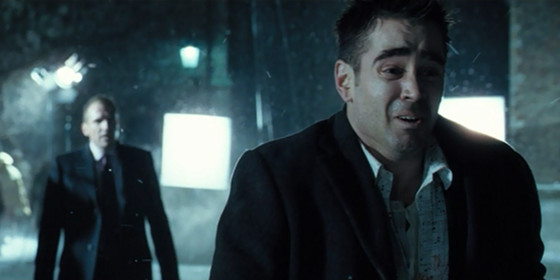
Director Martin McDonagh’s black comedy sees Colin Farrell and Brendan Gleeson star as two Irish hit men sent into hiding in Bruges, Belgium to await further orders from their boss Harry, played by Ralphe Fiennes. Ray (Farrell) is frustrated by this predicament and soon begins a relationship with a Chole, a drug dealer and film production crew assistant.
Eventually, partner in crime Ken (Gleeson) the older of the two, receives the instructions that Ray himself is to be the next hit, after accidently killing a child on the last job, something Ray is wracked with guilt about. Disobeying Harry, Ken urges Ray to leave Bruges which he does but following an incident on a train, Ray is sent back. Harry meanwhile arrives in Bruges to finish the job himself.
The film had only a limited cinematic release in the U.S but has since become a genuine cult favourite, with ‘subcultural codes’, witty banter and dark humour. However this is a different animal from the loud snappy talking fast shooting gangster film offered by the likes of Guy Ritchie or even Tarantino, for a start the central characters are genuinely empathic (something aided by the performances of both Farrell and Geeson).
Furthermore, there is a deeper more thematic element to this film; the film Chloe is working on is referred to as a ‘film within a film’, the actor’s costumes resemble The Last Judgement by Hieronymus Bosch, a painting apparent in the museum Ray and Ken visit, this invites the viewer to consider Bruges as a possible Hell or Purgatory for the characters, Ray even muses to himself that perhaps a lifetime in “Fuckin’ Bruges” would be Hell.
Shot on location in the city itself, the film is also carries a strong visual impact. McDonagh won a BAFTA for the screenplay and with considered character specific actions such as Ken’s careful scattering of coins before his blind jump at the film’s genuinely gripping climax it is understandable why.
2. 28 Days Later (2002)
Directed by Danny Boyle with a script by Alex Garland, this post-apocalyptic horror seemingly arrived on the same tide of British horror revival as Dog Soldiers. 28 Days however is a slicker, bigger budget production on a grander scale. The film begins as activists free chimpanzees infected with the ‘rage’ virus from a laboratory -one of them is bitten. 28 days later, Jim (Cillian Murphy) a bicycle courier awakes in a deserted London hospital in a seemingly deserted London.
However, Jim is soon confronted by victims infected with the rage virus, he is rescued by Selena (Naomi Harris) and Mark (Noah Huntley) somehow they must survive the outbreak and that includes both the infected and those who would appear the offer then safety. The film ends with an aircraft flying over the a remote cottage Jim, Seleena and Hannah (the teenage daughter of Frank, a cab driver) have sought refuge in.
Some have stated that 28 Days is the film responsible for re-igniting the current zombie-film craze (making the film an immediate pre-cursor to the success of Shaun of the Dead), which may well be true, but the infected are not strictly zombies indicating that if anything 28 Days perhaps took the zombie genre a step further into a more tangible sci-fi thriller which contains elements of what may be identified in accordance to academic Andrew Tudor’s description of post late 60’s ‘paranoid horror’.
Furthermore, Boyle cites John Wyndham’s Day of the Triffids as being Garland’s inspiration for the script. The notion of ‘being infected’ could also be considered present in Dog Soldiers that same year. Either way, the film remains compelling viewing and the scene of Jim crossing a desolate Westminster Bridge (something achieved by the production team only being permitted to close the bridge for a few minutes) is an iconic image of modern cinema.
The film, which spawned a sequel 28 Weeks Later, doubtless retains its cult appeal by drawing on its open ending further with a DVD release containing several alternate endings.
1. This is England (2006)
Shane Meadows directed and co-wrote (along with an uncredited Paddy Conserdine) this insight into 1980’s Skinhead subculture, depicting divisions from its roots in Ska and Reggae to its ‘adoption’ by racist nationalists. Set in Nottingham in 1983, the story centres on 12 year old Shaun (Thomas Turgoose – in his first ever performance) whose father has been killed in the Falkland’s war.
Out of step with his classmates, Shaun is mocked for his long hair and flared trousers, he eventually falls in with a group of older Skinheads ‘led’ by Woody (Joseph Gilgun). The group take Shaun under their wing, updating his image. All is well until Combo (Stephen Graham) returns from prison and divides the group with his white nationalist views – for a while Shaun is taken in by Combo and his ways.
Meadows’ name seemingly became a bigger buzz-word for British filmmaking than Danny Boyle a decade earlier as the film drew praise from critics whilst also gathering a strong cult following which in turn spanned several series of a TV spin off following the group throughout the decade.
For a film set in the 80’s Meadows avoids the ‘Northern town in industrial decline’ clichés, which had proved popular with Billy Elliot but were becoming formulaic, to produce a vibrant youth movie that was at the same time nostalgic. In this sense one could compare it to the sort of appeal generated by American Graffiti in the U.S 33 years previous.
However, Meadows’ film takes this a step further, providing a social document of an era/mood to that point overlooked by mainstream Brit cinema (although Alan Clarke’s 1983 TV play Made in Britain starring a young Tom Roth is worth mentioning here) the impact of which has perhaps been lessened by the subsequent TV series.
The more cynical may draw attention to Made in England’s poster and its recollection of 1979’s Quardrophenia, a similar cult film exploring an isolated character’s submersion within a subculture –one which was also released at a time when the fashions of that subculture were experiencing something of a nostalgic revival. This is (was) successful British film making and marketing in the 00’s.
Author Bio: George Cromack is a tutor at the University of Hull’s Scarborough Campus, with a BA in Scriptwriting he also teaches evening classes in Scriptwriting and Film Studies for the WEA. Whist also working towards his PhD, he is a keen writer of both prose and script, Cold Calling, a film short written by George premiered in October 2013. Follow him on Twitter @MadBasil.
